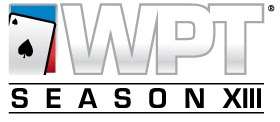GPI Announces Three Partnerships
The Global Poker Index (GPI) is on a roll. Just a week after announcing a joint marketing partnership with the Ivey League, the GPI has inked three more deals, shoving its hands into cookie jars all over the poker world.
The first of the three deals is with PokerPlayer Magazine. PokerPlayer, American PokerPlayer, and PokerPlayer365.com will all publish content created by the Global Poker Index. The GPI’s rankings are already published by the company and still will be, but now the GPI brand will be extended with “content that celebrates the success of poker players from around the world and across all levels of the game.”
In a press release, Dave Woods, editorial director of PokerPlayer, said, “Data is the foundation of informed content in the modern world and having access to the unrivalled resources of GPI and The Hendon Mob will ensure we bring the highest quality editorial to an even bigger circulation.”
Already the most prolific non-free poker magazine in the United Kingdom, PokerPlayer is taking this opportunity to now distribute its UK version for free in the 40 Grosvenor casinos.
Then there is the partnership with the poker room at the Aria Resort and Casino on the Las Vegas Strip. Starting this month, the Aria is launching its own leaderboard for players who participate in its live poker tournaments. Rather than reinventing the wheel, the casino will use the Global Poker Index’s proprietary ranking system while TheHendonMob.com, a GPI-owned site, will track the tournament results. Players will be able to view the rankings in person at the Aria, on Aria’s website, and on a special Aria page on the GPI’s website.
The Aria tournament rankings are not just for bragging rights, either. The poker room will actually be awarding prizes to players at the top of the leaderboard; prizes will be announced via Aria’s Twitter and Facebook accounts.
This is a relatively unique addition for a poker room. Tournament leaderboards are old hat online and even for major poker festivals, but they are not a common sight for a casino’s daily and weekly tournaments. And using a complex, respected methodology for determining rankings is a well-thought out step. At the very worst, this decision by Aria to team up with the Global Poker Index is neutral, but there is a good chance that it could have a solid positive effect on player loyalty; with the opportunity to win added prizes for sticking with the Aria for all their tournament needs, players could eschew other casinos and frequent the Aria more often.
Adam Altwies, Aria’s Director of Poker Operations said in a press release that his casino’s players “deserve to be exposed and recognized,” adding, “The GPI formula will allow the best players and not the richest to be rewarded, and that’s exactly what we were looking for.”
And finally, in what is the biggest partnership of the week for the Global Poker Index (told you the GPI was on a roll), it announced that it has a deal in place to provide the player ranking system for the World Poker Tour’s (WPT) Season XIII Player of the Year award. Traditionally, the Player of the Year was determined just by events on the main tour, but it is now adding the WPT500, WPTDeepStacks, and the WPT Regional and National Events to the mix, as well.
Years ago, I managed an online poker league for a website using an embarrassingly simple formula. The winner of a tournament received a number of points equal to the number of players in the tournament. Second place got one fewer point, on down to last place, which received one point. The system worked fine when the tournaments in the league were of similar size, but as that didn’t usually happen, it was basically a piece of junk. The Global Poker Index actually uses more than just grade school arithmetic to determine who is the best live tournament player in the world.
It uses a number of factors to come up with player scores, such as the number of players in the field, the buy-in, and when the tournament took place. Not all tournaments count towards a player’s ranking; the tournament must have a field of at least 21 players, cannot be a freeroll, and a player has to make the money to earn points. There is also a cap placed on buy-ins and field sizes so as not to completely overweight incredibly large events or those with nosebleed buy-ins.
Perhaps the most interesting part of the GPI calculation is the aging factor, wherein the most recent tournaments are given the most weight. A player’s cashes are divided into six half-year periods, with each period receiving its own separate aging factor. After three years, a live tournament no longer counts towards a player’s ranking on the GPI, so Doyle Brunson no longer gets credit in the rankings for his World Series of Poker Main Event triumphs.




















COMMENTS